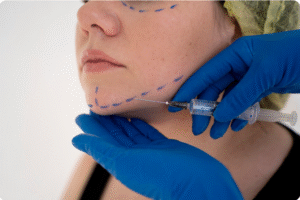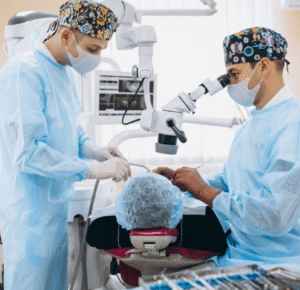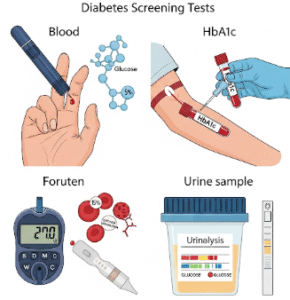Overview
Abdominal delivery, medically known as a Cesarean section (C-section), is one of the most common surgical procedures worldwide. It involves delivering a baby through an incision made in the mother’s abdomen and uterus, rather than through the vaginal canal. This procedure has been practiced for decades, and in recent years, it has become safer and more advanced thanks to improvements in surgical techniques, anesthesia, and postnatal care. In Korea, abdominal deliveries are performed under strict medical standards with the use of modern equipment, skilled obstetricians, and advanced recovery programs. The country has earned global recognition for its high maternal and infant survival rates and its ability to integrate cutting-edge medical technology into routine procedures.
What is Abdominal Delivery?
Abdominal delivery is performed when vaginal delivery is unsafe for the mother or baby. It may be done as a planned (elective) procedure when conditions like placenta previa, breech presentation, or twin pregnancies are detected beforehand. It can also be performed as an emergency procedure if complications arise during labor, such as fetal distress, obstructed labor, or maternal health risks. Unlike vaginal birth, abdominal delivery requires surgical intervention, hospitalization, and a recovery period that may take several weeks. However, in Korea, the process is carefully managed to minimize complications and ensure both mother and baby’s well-being.
What are the Benefits?
✔️ Provides a safe alternative when vaginal birth is too risky.
✔️ Protects both mother and baby in emergency situations.
✔️ Reduces trauma to the baby in complicated pregnancies.
✔️ Allows doctors to intervene quickly in high-risk cases.
✔️ In Korea, women benefit from advanced surgical precision, reduced scarring, and enhanced recovery programs.
Procedure Details
1) How should I prepare for Abdominal Delivery?
Preparation for an abdominal delivery begins well before the scheduled date. Your doctor will:
- ➤ Conduct blood tests, ultrasound scans, and health assessments.
- ➤ Provide instructions about fasting before surgery (usually 6–8 hours).
- ➤ Discuss anesthesia options, most commonly spinal or epidural anesthesia.
- ➤ Advise stopping certain medications that may increase bleeding risk.
- ➤ Encourage mothers to arrange for family support during the recovery period.
In Korea, hospitals also provide prenatal counseling and educational classes to help mothers prepare physically and mentally.
2) What happens during the procedure Abdominal Delivery?
During the surgery, you will be awake but numb from the chest down due to anesthesia. The process includes:
- ➤ The abdomen is cleaned and sterilized to reduce infection risk.
- ➤ A horizontal (bikini line) incision is made in the lower abdomen.
- ➤ Another incision is made in the uterus to allow safe delivery of the baby.
- ➤ The baby is carefully delivered, followed by removal of the placenta.
- ➤ Doctors close the incision using sutures or staples.
The entire procedure usually takes 45 to 60 minutes, although the actual delivery of the baby often occurs within the first 10 minutes. Korean hospitals use minimally invasive techniques that help reduce scarring and blood loss.
3) What happens after an Abdominal Delivery?
Immediately after delivery:
- ➤ You will be monitored in a recovery room for several hours.
- ➤ Pain relief medication and antibiotics are given to prevent infection.
- ➤ Mothers are encouraged to start gentle movement within 24 hours to prevent blood clots.
- ➤ Breastfeeding support is offered, often within the first hour of birth.
Hospital stays typically last 2–4 days, but some advanced Korean clinics offer short-stay recovery packages with intensive support. Doctors also provide scar care and postnatal physiotherapy to speed up healing.
Risks / Benefits
Like any surgical procedure, abdominal delivery carries risks, though they are minimized in modern Korean hospitals.
Possible risks include:
- Infection at the incision site.
- Heavy bleeding or blood clots.
- Adverse reactions to anesthesia.
- Longer recovery time compared to vaginal birth.
- Complications in future pregnancies.
Benefits include:
- A controlled and safer environment for high-risk pregnancies.
- Reduced trauma to the baby during complicated deliveries.
- Better outcomes in emergency situations.
- Access to world-class maternal care in Korea, ensuring peace of mind.
Recovery and Outlook
Most women recover within 4–6 weeks, though complete healing may take longer depending on overall health and post-surgery care. Korea’s medical system is designed to support new mothers with:
✔️ Advanced pain management programs.
✔️ Scar-reduction treatments and wound care.
✔️ Postnatal rehabilitation, including physical therapy.
✔️ Emotional and mental health support for new mothers.
With proper care, women can return to normal activities, and future pregnancies are usually safe under medical supervision.
When To Call the Doctor
It is important to contact a healthcare provider if you experience:
➤ Severe abdominal pain unrelieved by medication.
➤ Heavy vaginal bleeding or large blood clots.
➤ Fever, redness, swelling, or pus around the incision.
➤ Difficulty breathing or chest pain.
➤ Severe headache or leg swelling (possible blood clot).
Early medical attention prevents complications and ensures a smooth recovery.
Best Korea Option / Process
Korea is globally recognized for its state-of-the-art maternity care. Mothers choosing abdominal delivery in Korea can expect:
- Highly trained obstetricians with international expertise.
- Advanced surgical facilities with the latest monitoring systems.
- Family-centered C-section options, allowing immediate skin-to-skin contact.
- Specialized postnatal care, including nutrition, physiotherapy, and scar management programs.
- Affordable packages compared to Western countries, with no compromise on quality.













